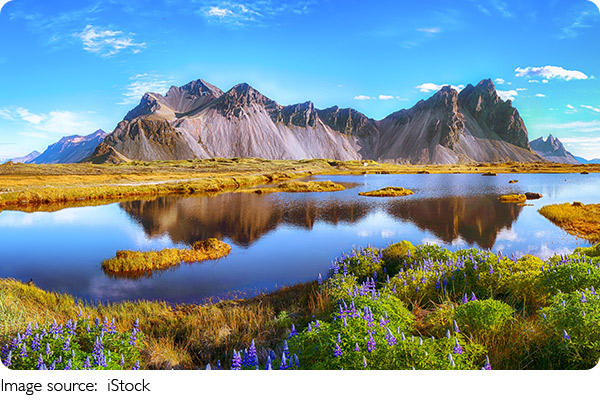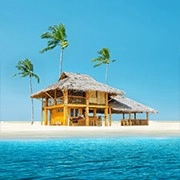Iceland Travel Guide

Iceland, a land of raw natural beauty, offers travelers an unforgettable experience with its volcanoes, glaciers, and geothermal hot springs. Whether you are a nature lover, history enthusiast, or adventure seeker, Iceland has something for everyone.
Reykjavik, the capital, is the starting point for most travelers, with its charming streets, lively culture, and access to nearby natural wonders. In this guide, we will explore the best spots to visit, tips on transportation, ideal visiting times, and essential travel information to make your Icelandic adventure hassle-free.
Best Time to Visit Iceland
The best time to visit Iceland largely depends on your preferences. For those who want to witness the Northern Lights, the winter months from September to April are ideal. The Northern Lights are visible on clear nights, especially in areas away from city lights, such as Thingvellir National Park. However, if you’re looking for milder weather and vibrant landscapes, the summer months (June to August) are the best. The days are long, and the famous Midnight Sun means you can enjoy daylight for up to 24 hours in some parts of the country.
Best Time for Northern Lights: September to April
Best Time for Outdoor Activities: June to August
Top Attractions and How to Get There
1. Blue Lagoon
The Blue Lagoon is Iceland’s most famous geothermal spa, located about 40 minutes from Reykjavik. The lagoon’s warm, milky-blue waters are rich in silica and sulfur, offering a soothing and rejuvenating experience.
Ticket Price: Adult (14 years and up) – $65 USD
Opening Hours: 8:00 AM – 10:00 PM daily
Tip: Book your tickets in advance, especially in the summer, as it can get crowded.
2. Golden Circle
The Golden Circle is a popular tourist route that includes three must-see sites: Thingvellir National Park, Geysir Geothermal Area, and Gullfoss Waterfall. The route is approximately 300 kilometers long and can be driven in a day.
Best Time to Visit: Summer for long daylight hours or winter for fewer crowds and the chance to see the Northern Lights
Tip: Renting a car is the best way to explore the Golden Circle at your own pace. Expect to spend around $45 USD for a full-day car rental.
3. Jökulsárlón Glacier Lagoon
This stunning lagoon is filled with floating icebergs and offers a surreal experience. You can also take a boat tour to get closer to the icebergs.
Ticket Price: Boat Tour – Around $45 USD
Opening Hours: Open year-round, with boat tours typically operating from May to September
Tip: Make sure to visit Diamond Beach, where icebergs wash ashore and glisten on the black sand.
4. Thingvellir National Park
A UNESCO World Heritage Site, Thingvellir is the location of the first Icelandic parliament and offers dramatic landscapes where you can walk between two tectonic plates.
Entrance Fee: Free
Best Time to Visit: All year, but the park is especially beautiful in autumn with colorful foliage.

Transportation and Getting Around Iceland
Getting around Iceland is relatively easy, but it’s important to know your options and how to navigate the country.
Renting a Car: Renting a car is highly recommended for those who want flexibility and freedom. The roads are well-maintained, but be aware that some areas, particularly in the highlands, require a 4x4 vehicle. Prices for a basic car rental start from around $45 USD per day.
Public Transportation: Reykjavik has a reliable bus system, but for long-distance travel or visits to remote areas, buses are infrequent and can be expensive. The Icelandic Road Administration website offers updated bus schedules.
Tours: Guided tours are another great option, especially for first-time visitors. You can book day trips or multi-day tours that take you to major sites like the Golden Circle, South Coast, and more. Tour prices vary depending on the duration and activities but start around $70 USD per day.
Useful Travel Tips
1. Currency: Iceland’s currency is the Icelandic Krona (ISK). While credit cards are widely accepted, it’s always good to have some cash on hand, especially in rural areas.
2. Weather: Iceland’s weather can be unpredictable. Always bring layers, a waterproof jacket, and sturdy shoes. Even in summer, temperatures can drop, especially in the evenings.
3. Stay Connected: Iceland has excellent Wi-Fi, and most accommodations and public places offer free internet access. However, if you plan to travel to remote areas, consider renting a portable Wi-Fi hotspot.
4. Pack Smart: Don’t forget sunscreen, even in winter, as the sun can be deceptively strong at higher altitudes or during the summer months. A good camera is also essential for capturing the breathtaking landscapes.
5. Safety: Iceland is one of the safest countries in the world, but you should still exercise caution when hiking or exploring remote areas. Always check weather conditions before venturing into the wilderness.
Final Thoughts: Your Iceland Adventure Awaits
Iceland offers a travel experience like no other, from its otherworldly landscapes to its rich cultural heritage. Whether you’re exploring the Golden Circle, relaxing in the Blue Lagoon, or marveling at the Northern Lights, the country has something unforgettable to offer. With proper planning and a few helpful tips, your Iceland adventure will be one to remember.
So, Lykkers, are you ready to discover the magic of Iceland? Start planning your trip today and prepare for an incredible journey into the heart of nature’s wonders!
Top 10 Places To Visit in Iceland - Travel Guide
Video by Ryan Shirley

 · Travel Team
· Travel Team